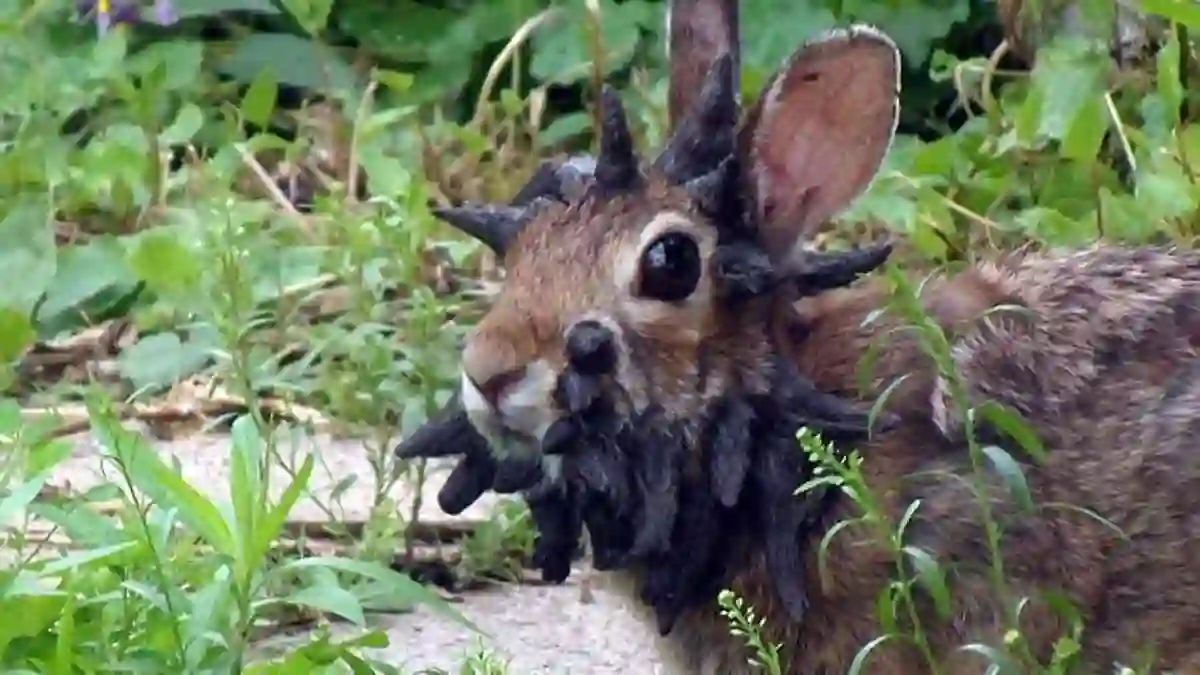What started as a strange wildlife story in Colorado has now become a wider concern across several states.
More and more residents are reporting sightings of rabbits with disturbing horn- or tentacle-like growths sprouting from their faces—earning them the nickname “Frankenstein rabbits.”
The Virus Behind the Disturbing Growths
The condition is caused by the cottontail rabbit papilloma virus (CRPV), sometimes called Shope papilloma virus.
It spreads mainly through mosquito and tick bites.
While the sight of these infected rabbits is shocking, experts stress that humans are very unlikely to contract CRPV directly.
Why Experts Still Urge Caution
Dr. Omer Awan from the University of Maryland School of Medicine explained that the bigger risk for people comes from other diseases carried by the same insects that spread CRPV among rabbits.
Ticks can transmit Lyme disease and Rocky Mountain Spotted Fever, while mosquitoes can spread illnesses such as West Nile Virus, Zika, Dengue Fever, and Chikungunya—some of which can be life-threatening.
Spread Beyond Colorado
What began in Colorado is now reaching further north and east.
Reports have surfaced in Minnesota, Nebraska, and South Dakota.
Social media posts show rabbits in Saint Paul, Minneapolis, and Plymouth with the telltale growths.
One viral video shared on August 18 showed a rabbit in Sioux Falls, South Dakota, nearly 500 miles from the original sightings.
What Happens to Infected Rabbits
The first signs of infection are small red spots that eventually turn into wart-like tumors.
Over time, these can grow into keratinized papillomas, which resemble horns or tentacles.
In some cases, the growths can even transform into skin cancer, which can be fatal if untreated.
Even when not cancerous, the growths can cause serious problems for the rabbits.
They can block vision, interfere with feeding, and make the animals vulnerable to predators.
Some infected rabbits even risk starving to death because they can’t eat properly.
Climate Change Making Things Worse
According to Dr. Awan, climate change is fueling the spread of this grotesque condition.
Warmer temperatures create ideal breeding grounds for ticks and mosquitoes, increasing the chances of infection.
As summers heat up, experts believe CRPV could spread further across the Midwest and even into the Southwest.
Low Risk to Humans—But Not Zero
While experts say it’s “extremely unlikely” that CRPV will jump to humans, Dr. Awan reminded people that viruses can mutate.
“You can never say never with science,” he said.
Still, he emphasized that the chances of this virus becoming a human threat anytime soon remain very slim.
What People Should Do
Dr. Awan’s advice is clear: avoid contact with infected rabbits and protect pet rabbits from insects.
For humans, the best prevention remains limiting exposure to ticks and mosquitoes, which already spread a wide range of serious diseases.
A Growing Problem Beyond Rabbits
The rising cases of CRPV are just one example of how climate shifts are changing the disease landscape.
Illnesses like Lyme disease are now appearing in places where they were rarely seen before, including southern Canada and northern US states such as Maine.
As Dr. Awan warned, warmer weather is giving both pests and the diseases they carry more opportunities to spread—making this problem one that extends far beyond rabbits.



